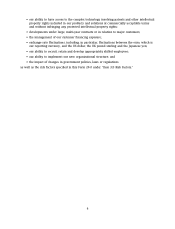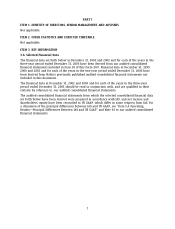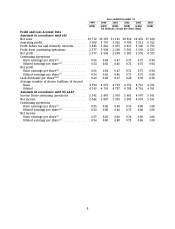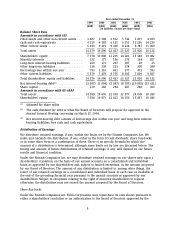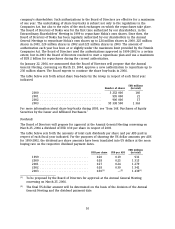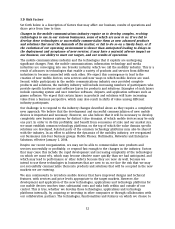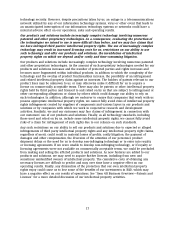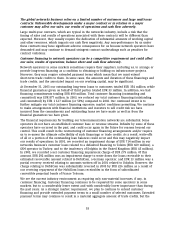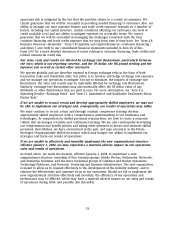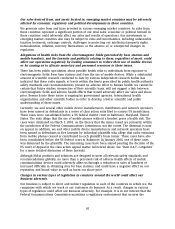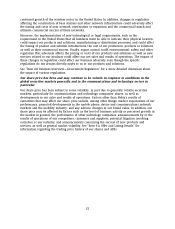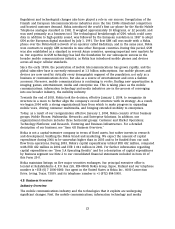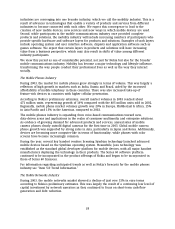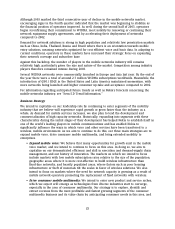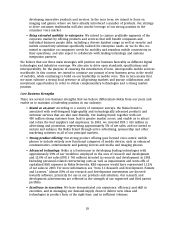Nokia 2003 Annual Report Download - page 17
Download and view the complete annual report
Please find page 17 of the 2003 Nokia annual report below. You can navigate through the pages in the report by either clicking on the pages listed below, or by using the keyword search tool below to find specific information within the annual report.We are developing a number of our new products and solutions in collaboration with other
companies. If any of these companies were to fail to perform, we may not be able to bring
our products and solutions to market successfully or on a timely basis.
More frequently than before, we invite the providers of technology, components or software to
work with us to develop technologies or new products and solutions. These arrangements involve
the commitment by each company of various resources, including technology, research and
development efforts, and personnel. Although we attempt to structure these arrangements to
maximize cooperation and loyalty between the parties, our ability to introduce new products and
solutions that meet our and our customers’ quality, safety and other corresponding standards
successfully and on schedule could be hampered if, for example, any of the following risks were to
materialize: the arrangements with our collaboration partners do not develop as expected, the
technologies provided by our collaboration partners are not sufficiently protected or infringe third
parties’ intellectual property rights in a way that we cannot foresee or prevent, the technologies,
products or solutions supplied by companies working with us do not meet the required quality,
safety and other corresponding standards or customer needs, our own quality controls fail, or the
financial standing of our collaboration partners deteriorates.
We depend on our suppliers for the timely delivery of components and for their compliance
with our supplier requirements, such as, most notably, our and our customers’ product
quality, safety and other corresponding standards. Their failure to do so could adversely
affect our ability to deliver our products and solutions successfully and on time.
Our manufacturing operations depend to a certain extent on obtaining adequate supplies of fully
functional components on a timely basis. Our principal requirements are for electronic
components, such as semiconductors, microprocessors, micro controllers, memory devices and
displays, which have a wide range of applications in our products. In addition, a particular
component may be available only from a limited number of suppliers. Suppliers may from time to
time extend lead times, limit supplies or increase prices due to capacity constraints or other
factors, which could adversely affect our ability to deliver our products and solutions on a timely
basis. Moreover, even if we attempt to select our suppliers and manage our supplier relationships
with scrutiny, a component supplier may fail to meet our supplier requirements, such as, most
notably, our and our customers’ product quality, safety and other corresponding standards, and
consequently some of our products are unacceptable to us and our customers, or we may fail in
our own quality controls. Moreover, a component supplier may experience delays or disruption to
its manufacturing, or financial difficulties. Any of these events could delay our successful delivery
of products and solutions, which meet our and our customers’ quality, safety and other
corresponding requirements, or otherwise adversely affect our sales and our results of operations.
Also, our reputation and brand value may be affected due to real or merely alleged failures in our
products and solutions.
Our operations rely on complex and highly centralized information technology systems and
networks. If any system or network disruption occurs, this reliance could have a material
adverse impact on our operations, sales and operating results.
Our operations rely to a significant degree on the efficient and uninterrupted operation of complex
and highly centralized information technology systems and networks, which are integrated with
those of third parties. Any failure of our current or future systems or networks could have a
material adverse effect on our operations, sales and operating results. Furthermore, any data
leakages resulting from information technology security breaches could also adversely affect us.
All information technology systems are potentially vulnerable to damage or interruption from a
variety of sources. We pursue various measures in order to manage our risks related to system
and network disruptions, including the use of multiple suppliers and available information
16


